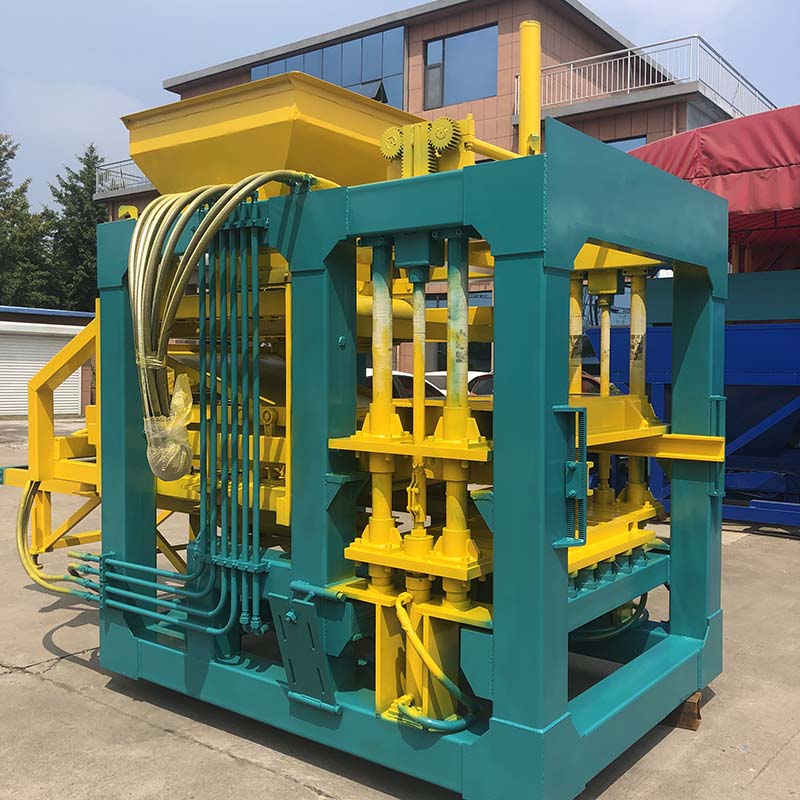
image source: Aiwei block machine
Introduction
As the global construction industry embraces sustainability as a priority, South Africa stands at the forefront of adopting eco-friendly practices in building. One of the cornerstones of this sustainable revolution is the utilization of brick making machines. In this article, we delve into how brick making machines are enhancing sustainable construction in South Africa, their benefits in reducing carbon footprint, conserving resources, and fostering economic growth while prioritizing environmental responsibility.
1. Reducing Carbon Footprint
The construction industry is a significant contributor to carbon emissions, making it crucial to seek greener alternatives. Brick making machines in South Africa offer a viable solution.
- Low-Emission Production: These machines produce bricks using a significantly lower amount of energy compared to traditional kilns, resulting in reduced carbon emissions.
- Use of Fly Ash: Incorporating fly ash, an industrial byproduct, in brick production further reduces carbon emissions by utilizing a material that would otherwise be discarded.
2. Conserving Natural Resources
Sustainable construction necessitates the responsible use of resources, and brick making machines align with this goal by optimizing material consumption.
- Efficient Raw Material Usage: These machines ensure that raw materials, such as clay and cement, are used more efficiently, minimizing waste and conserving valuable resources.
- Reduced Quarrying: Brick making machines decrease the need for excessive quarrying of raw materials, preserving landscapes and ecosystems.
3. Energy Efficiency
Brick making machines incorporate modern technology to promote energy efficiency in the production process, contributing to a more sustainable construction industry in South Africa.
- Automated Operations: Automation streamlines the production process, reducing energy consumption and increasing overall efficiency.
- Innovative Kiln Designs: Advanced kiln designs in brick making machines consume less energy while maintaining consistent quality.
4. Minimizing Waste Generation
Waste disposal is a significant concern in construction. Brick making machines in South Africa are designed to minimize waste generation, contributing to a cleaner environment.
- Precise Manufacturing: Automated processes ensure uniform brick dimensions and minimize the production of substandard bricks that would otherwise go to waste.
- Recycling Opportunities: Bricks that do not meet quality standards can be recycled back into the production process, reducing waste and conserving resources.
5. Job Creation and Economic Growth
Sustainable construction practices align with economic growth by creating job opportunities and fostering a skilled workforce. Brick making machines contribute to this growth in several ways.
- Skill Development: Operating and maintaining brick making machines requires skilled labor, offering employment opportunities and skill development.
- Local Entrepreneurship: These machines empower local entrepreneurs to establish brick manufacturing businesses, boosting the economy at the grassroots level.
6. Improved Indoor Air Quality
Traditional building materials, such as adobe, can release harmful substances into the indoor environment. Brick making machines in South Africa offer a safer alternative.
- Low Emissions: Bricks produced by these machines have lower emissions and emit fewer volatile organic compounds, promoting healthier indoor air quality.
- Fire Resistance: Brick-built structures are inherently fire-resistant, reducing the risk of fires and the release of toxic fumes.
7. Diverse Applications in Sustainable Construction
Brick making machines are versatile tools that contribute to a wide range of sustainable construction practices in South Africa.
- Interlocking Bricks: These machines produce interlocking bricks that require minimal mortar, reducing construction time and material use.
- Thermal Insulation: Some brick designs offer enhanced thermal insulation properties, reducing the need for energy-intensive heating and cooling systems.
8. Future Prospects: Integrating Innovation
The future of brick making machines in South Africa holds immense potential for even greater sustainability through technological advancements.
- Recycling Technologies: Developments in recycling technologies could further increase the recyclability of brick materials, reducing waste.
- Renewable Energy Integration: Integrating renewable energy sources into brick production could enhance energy efficiency and reduce carbon emissions.
Conclusion
Brick making machines have emerged as transformative tools in South Africa’s sustainable construction journey, addressing environmental challenges while fostering economic growth. By significantly reducing carbon emissions, conserving resources, promoting energy efficiency, and creating employment opportunities, these machines exemplify a holistic approach to sustainable building practices. South Africa’s construction landscape is being reshaped by eco-friendly innovation, and as brick making machines continue to evolve, they are not just building structures, but also a greener, more prosperous future for the nation.